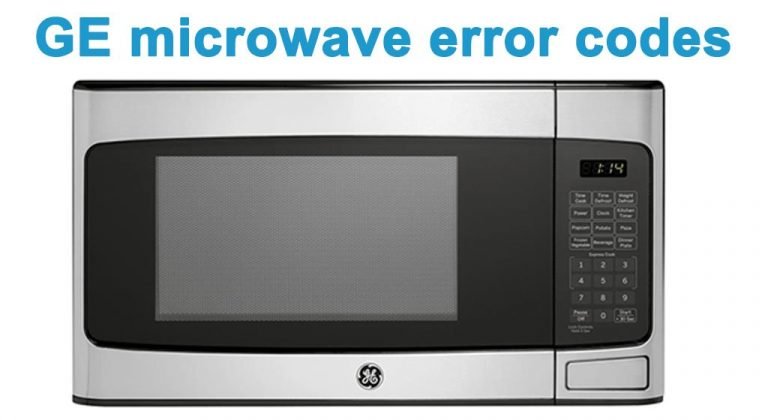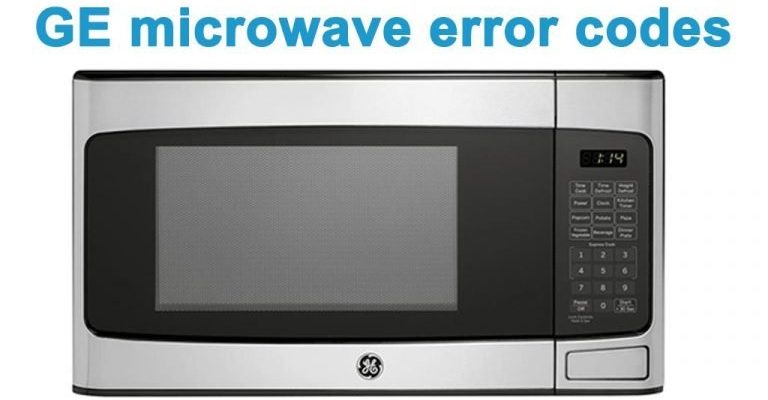
You might be wondering why the door lock system is such a big deal. Well, the microwave’s door isn’t just a regular door. It’s designed with safety in mind, ensuring that no microwaves escape while your food is heating. So, when the system senses something’s amiss, it raises an alarm — hence the LE error code. But why does this error occur? Let’s dive deep into the common causes behind this pesky issue, so you can get your microwave back up and running, ready to handle your kitchen needs once again.
Understanding the Door Lock Mechanism
The door lock system in your GE microwave is akin to the lock on a high-security vault. It’s not just about keeping the door shut; it ensures a tight seal, preventing any potentially harmful microwave energy from leaking out. This system typically involves several interlocking components that must align perfectly for the microwave to operate. Think of it like a complex handshake where both parties must agree before proceeding. If any part of this mechanism fails to engage correctly, you could see the dreaded LE code.
What often happens is that over time, wear and tear can affect the door latches or hinges. Just like a well-used book whose cover might get loose, the components that keep your microwave’s door tightly closed can wear out. Even slight misalignments can trigger the system to think the door is open, resulting in an LE error. Sometimes, this could also be due to physical obstructions like crumbs or debris caught in the latch, preventing it from closing properly.
To address the problem, you might first want to closely examine the door and its hinges. Check for signs of damage or misalignment and clean around the door frame to clear any debris. If the parts are worn or broken, it may require replacing the latches or adjusting the hinges. Doing so can often resolve the issue, much like tightening the screws on a loose cabinet door. This ensures a good seal and prevents the LE error from interrupting your next meal prep.
Electrical Components and Their Role
In some cases, the Error Code LE might stem from a problem within the microwave’s internal electronics rather than mechanical parts. The door lock’s functioning heavily relies on tiny switches and sensors that detect whether a door is closed securely. Think of these sensors as the vigilant eyes of the system. If any sensor or switch malfunctions, it might wrongly suggest the door is open, even when it’s not. This could lead to confusion, much like a faulty sensor in a car that’s inaccurately indicating low tire pressure.
Electrical issues can arise from various factors, such as power surges or faulty wiring. For instance, if there’s a short circuit or damage in the wiring connected to the door’s switches, it’s like a broken line of communication that causes the microwave to halt operation for safety reasons. You might say it’s the device’s way of erring on the side of caution.
For a beginner, tackling electrical components might sound daunting. However, identifying these issues can sometimes be as simple as resetting your microwave by unplugging it for a few minutes to reset its control board. But if the LE code persists, calling a professional technician would be the best option. They can trace the issue back to its source, possibly replacing any problematic sensors or wiring, much like a skilled electrician expertly rewires a faulty circuit.
Simple Maintenance and Preventive Tips
To prevent the Error Code LE from becoming a recurring nightmare, consider incorporating some simple maintenance habits. Just like maintaining a car to avoid breakdowns, a little care can go a long way in keeping your microwave error-free. Start with regular cleaning of the door seals and latches to ensure no food particles or dirt compromise the closing mechanism. Think of it as brushing your teeth to prevent cavities; a little effort can prevent bigger problems down the road.
It’s also wise to be gentle with the microwave door. Slamming it shut can misalign the latches over time, just as a strong wind might slam a door off its hinges. Instead, close it with a firm yet gentle push to ensure it latches securely without damaging the components. Regularly inspecting the door’s condition is another proactive measure. If you notice any unusual resistance or alignment issues, it’s best to address them before they escalate into significant repairs.
Lastly, remember that occasional professional maintenance can keep your microwave running smoothly, much like a routine car service. A technician can thoroughly inspect it, ensuring no parts are on the verge of failing, thus preventing unwanted disruptions to your cooking routine. By taking these steps, you’ll ensure that Error Code LE becomes a rare occurrence, allowing your microwave to remain a reliable kitchen companion.
